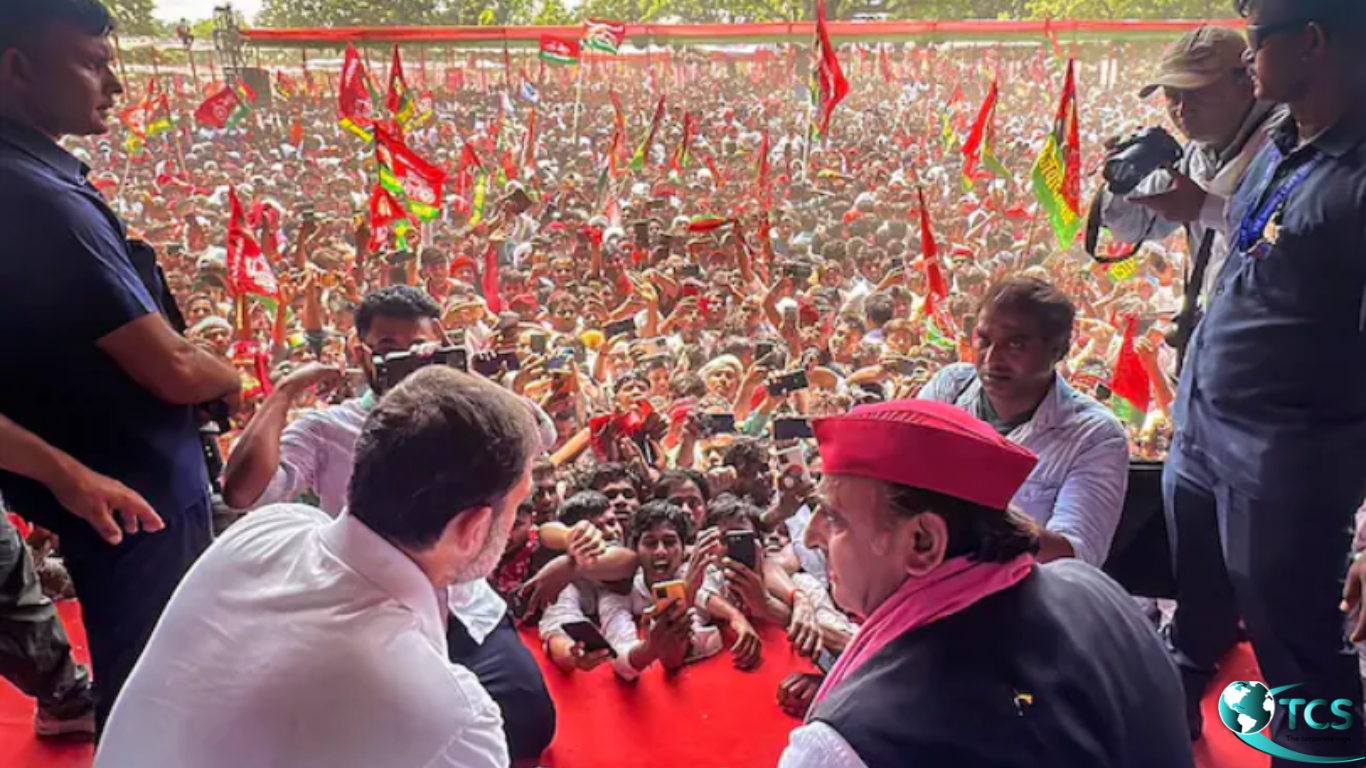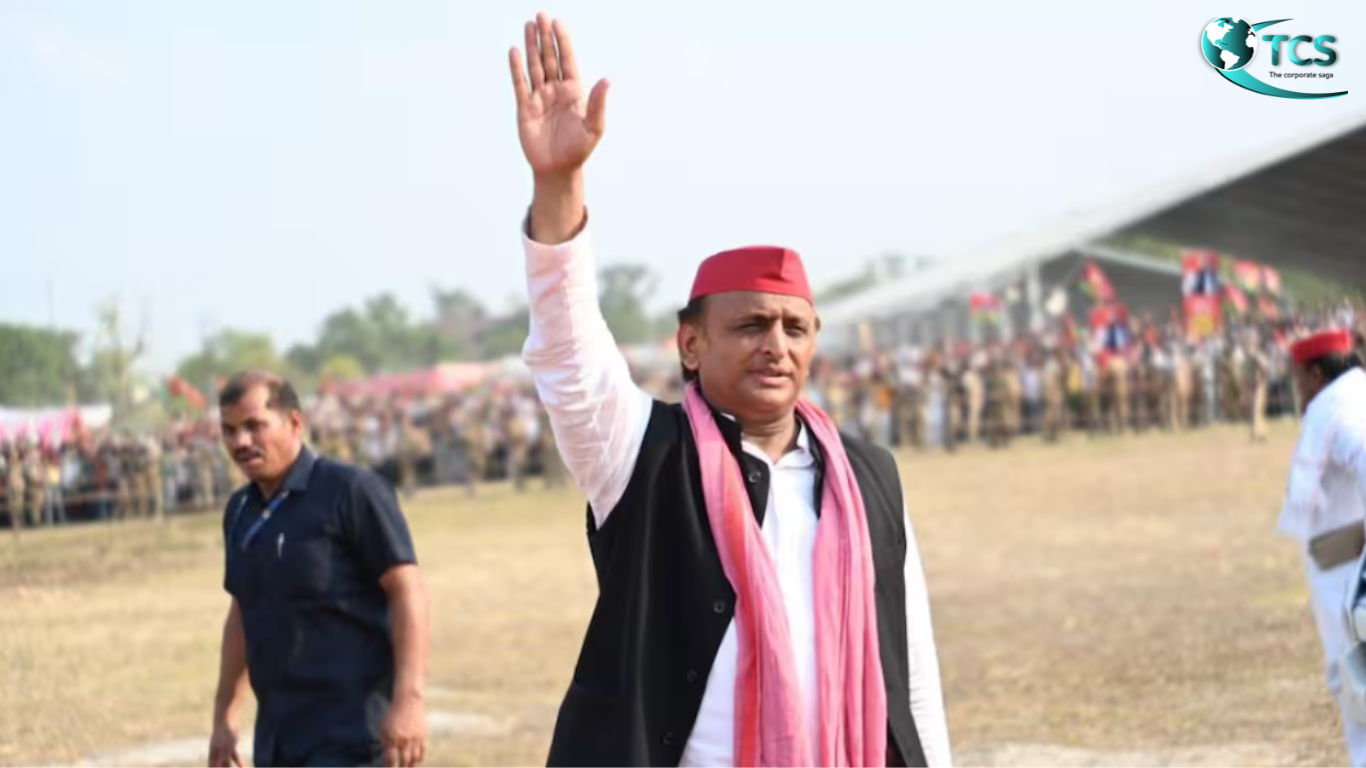Samajwadi Party Election Results 2024 | Samajwadi Party Makes Comeback in Uttar Pradesh as INDIA Bloc Leads Over NDA

The Samajwadi Party has made a significant comeback in the 2024 elections, showcasing a remarkable performance in Uttar Pradesh. As part of the INDIA bloc, the party has taken a decisive lead over the NDA, indicating a shift in the political landscape of the state.
Resurgence of the Samajwadi Party in Uttar Pradesh
The 2024 elections have proven to be a turning point for the Samajwadi Party. After facing setbacks in previous elections, the party has regained its foothold in Uttar Pradesh. The comeback can be attributed to a strategic campaign, strong grassroots mobilization, and effective coalition-building within the INDIA bloc. The party’s focus on key issues such as unemployment, healthcare, and education resonated with voters, leading to a surge in support.
INDIA Bloc’s Strategic Advantage
The INDIA bloc, comprising various opposition parties, has played a pivotal role in challenging the dominance of the NDA. The bloc’s unified approach and coordinated efforts have created a formidable force against the ruling alliance. The Samajwadi Party’s alignment with the INDIA bloc has provided it with the necessary political leverage and support to mount a successful campaign. This coalition has not only amplified the party’s reach but also enhanced its credibility among voters.
Key Factors Behind the Samajwadi Party’s Success
Grassroots Mobilization
The Samajwadi Party’s success can be largely attributed to its robust grassroots mobilization. The party has actively engaged with communities across Uttar Pradesh, addressing local issues and concerns. This hands-on approach has fostered a strong connection with the electorate, translating into significant voter support.
Strategic Alliances
Forming strategic alliances within the INDIA bloc has been crucial for the Samajwadi Party. These alliances have allowed the party to pool resources, share expertise, and consolidate votes. The combined efforts of the opposition parties have created a powerful counterforce to the NDA, leading to a significant shift in the electoral dynamics of the state.

Focus on Key Issues
The party’s campaign strategy has centered around addressing key issues that resonate with the electorate. Unemployment, healthcare, and education have been at the forefront of the party’s agenda. By prioritizing these issues, the Samajwadi Party has managed to align itself with the needs and aspirations of the people, garnering widespread support.
Impact of the INDIA Bloc on National Politics
The success of the INDIA bloc in Uttar Pradesh is likely to have far-reaching implications for national politics. The bloc’s ability to challenge the NDA’s dominance in one of the most politically significant states in India could signal a shift in the balance of power at the national level. The unity and strength demonstrated by the opposition parties in Uttar Pradesh might inspire similar coalitions in other states, potentially altering the political landscape of the country.
Voter Demographics and Trends
Youth and First-Time Voters
The 2024 elections saw a significant turnout of youth and first-time voters, many of whom favored the Samajwadi Party. The party’s focus on addressing issues such as unemployment and education resonated with this demographic, leading to increased support from young voters.
Rural and Urban Divide
The Samajwadi Party’s campaign strategy effectively bridged the rural-urban divide. By addressing concerns specific to both rural and urban areas, the party managed to secure a diverse voter base. This comprehensive approach played a key role in the party’s electoral success.
Challenges Ahead for the Samajwadi Party
Maintaining Momentum
While the Samajwadi Party’s comeback is commendable, maintaining this momentum will be a significant challenge. The party will need to continue addressing the issues that resonate with voters and ensure that its governance aligns with the promises made during the campaign.
Sustaining Coalition Dynamics
The INDIA bloc’s success hinges on the continued cooperation and coordination among its constituent parties. The Samajwadi Party will need to navigate the complexities of coalition politics to sustain the bloc’s unity and effectiveness in the long term.
Future Prospects for the INDIA Bloc
Expansion and Consolidation
The INDIA bloc’s performance in Uttar Pradesh could pave the way for its expansion and consolidation in other states. The success of this coalition might encourage other opposition parties to join forces, creating a stronger and more unified front against the NDA at the national level.

Policy and Governance
The INDIA bloc will need to focus on effective governance and policy implementation to maintain voter trust and support. Delivering on campaign promises and addressing key issues will be crucial for the bloc’s future prospects.
The 2024 election results have marked a significant comeback for the Samajwadi Party in Uttar Pradesh, with the INDIA bloc taking a decisive lead over the NDA. This success underscores the importance of strategic alliances, grassroots mobilization, and a focus on key issues. As the INDIA bloc’s influence grows, its impact on national politics could reshape the political landscape of India.
2024 Lok Sabha Election Result LIVE: Samajwadi Party Leads INDIA's Big Charge In UP, Keeps BJP At Bay
The 2024 Lok Sabha elections have brought about a significant shift in Uttar Pradesh’s political landscape, with the Samajwadi Party leading the charge for the INDIA bloc. The party’s remarkable performance is keeping the BJP at bay, signaling a potential change in power dynamics in one of India’s most politically crucial states.
Samajwadi Party’s Strong Comeback
In the 2024 Lok Sabha elections, the Samajwadi Party has made a powerful comeback in Uttar Pradesh. The party, which had faced setbacks in previous elections, has now emerged as a key player in the INDIA bloc’s strategy to counter the BJP. This resurgence can be attributed to a well-orchestrated campaign, strategic alliances, and a deep connection with the electorate.
Key Strategies Driving Success
Grassroots Mobilization
A cornerstone of the Samajwadi Party’s strategy has been its robust grassroots mobilization. By engaging directly with communities and addressing local issues, the party has strengthened its bond with the voters. This hands-on approach has translated into widespread support across various demographics.
Strategic Alliances within the INDIA Bloc
The formation of the INDIA bloc has been a game-changer for the Samajwadi Party. By aligning with other opposition parties, the Samajwadi Party has benefited from shared resources, collective expertise, and a unified front against the BJP. This coalition has enabled the party to amplify its reach and influence.
Focus on Key Electoral Issues
The Samajwadi Party has centered its campaign around pressing issues such as unemployment, healthcare, and education. This focus has resonated deeply with the electorate, particularly among the youth and marginalized communities. By addressing these concerns, the party has positioned itself as a credible alternative to the BJP.
INDIA Bloc’s Performance in Uttar Pradesh
The INDIA bloc’s performance in Uttar Pradesh has been a significant factor in the overall election results. The bloc’s ability to present a united front against the BJP has disrupted the traditional political dynamics of the state. The success of this coalition in Uttar Pradesh could have implications for its strategy in other states and at the national level.
Implications for National Politics
Shifting Power Dynamics
The strong performance of the Samajwadi Party and the INDIA bloc in Uttar Pradesh indicates a potential shift in power dynamics at the national level. Uttar Pradesh, with its large number of parliamentary seats, plays a crucial role in determining the composition of the Lok Sabha. A lead in this state could translate into significant influence in national politics.
Inspiration for Other States
The success of the INDIA bloc in Uttar Pradesh may inspire similar coalitions in other states. The ability of opposition parties to come together and challenge the BJP’s dominance could reshape the political landscape across the country. This model of unity and collaboration might become a blueprint for future electoral strategies.
Voter Demographics and Trends
Youth Engagement
The 2024 elections have seen a notable increase in youth engagement. The Samajwadi Party’s focus on issues like employment and education has attracted young voters, many of whom are first-time participants in the electoral process. This demographic shift has been a key factor in the party’s success.
Urban and Rural Outreach
The Samajwadi Party has effectively bridged the urban-rural divide in its campaign strategy. By addressing the unique concerns of both urban and rural voters, the party has managed to build a broad and diverse support base. This comprehensive approach has been instrumental in its electoral performance.
Challenges and Future Prospects
Sustaining Momentum
While the current election results are promising, the Samajwadi Party faces the challenge of sustaining this momentum. The party will need to continue addressing the issues that matter to voters and ensure that its governance meets public expectations.
Navigating Coalition Politics
The INDIA bloc’s success depends on the continued cooperation among its member parties. The Samajwadi Party will need to navigate the complexities of coalition politics to maintain the unity and effectiveness of the bloc.
Expanding Influence
The success in Uttar Pradesh provides a foundation for the INDIA bloc to expand its influence to other states. The bloc’s ability to replicate this success elsewhere will be crucial for its long-term prospects in national politics.
The 2024 Lok Sabha elections have marked a significant victory for the Samajwadi Party and the INDIA bloc in Uttar Pradesh. This performance is a testament to the party’s strategic campaign, effective alliances, and focus on key issues. As the INDIA bloc continues to challenge the BJP’s dominance, its impact on national politics will be closely watched. The coming months will be critical in determining how these electoral gains translate into governance and further political influence.
